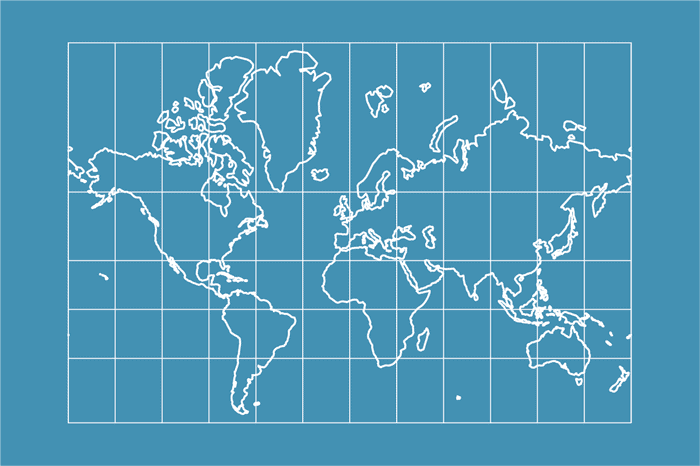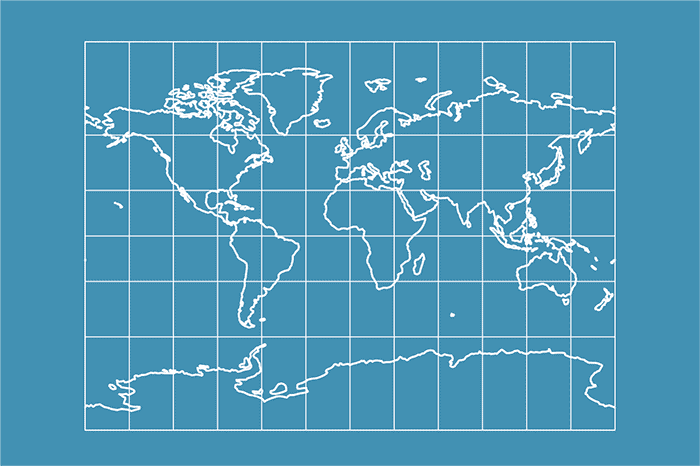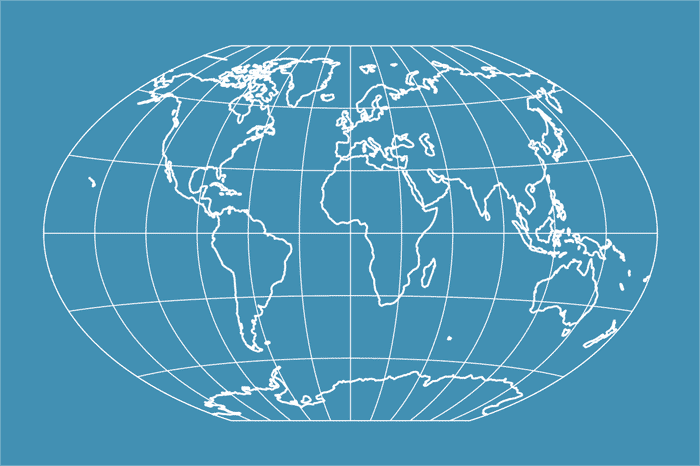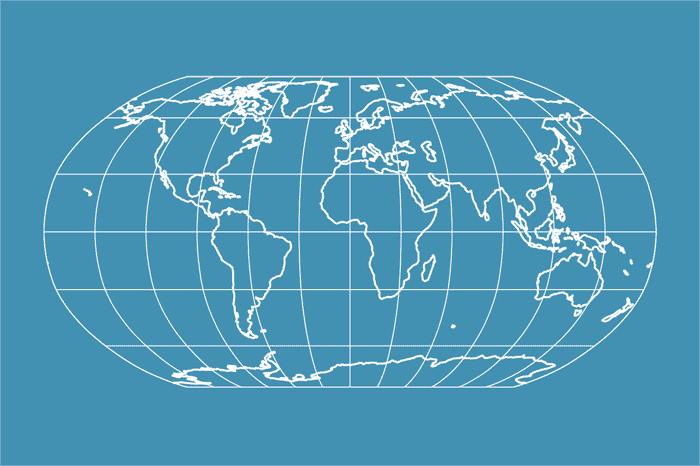The Earth is a sphere (actually… it isn’t… it’s an irregularly shaped body, slightly flattened at the poles, but at the scale of the maps available here at One Stop Map we can safely approximate it as a sphere) and a printed map or a screen is flat. So how do we go from that sphere to a flat shape? That’s where map projections come in!
Going from a sphere to a flat plane will involve some measure of distortion. The less distortion a map projection has the better it fits. Many map projections that are tuned for specific areas and will minimize the distortions for those areas (at the expense of enlarging them in other areas).
Cartographers will consider three properties when describing these distortions: whether a projection is true in form (called conformal), area (called equal-area) or distance (called equidistant). For example if country A is twice size as country B that will be accurately reflected on an equal-area map projection. And on an equidistant map projection if A and B are twice as far apart as A and C you’ll be able to see that on the map.
These properties are mutually exclusive, a map projection can only be true in one of the three and in fact most map projections are true in none of them but find a good compromise.
So which projection is best? That depends… it depends on the region you are mapping, the shape and size you have available in your layout and the purpose of your map.
Here at One Stop Map we tend to pick what is “common” for maps of continents, countries or US states. We make sure that the subject of the map is properly shown and try to minimize all three kinds of distortions as much as possible.
Our world maps are offered in a couple of standard projections:

This is probably one of the most recognizable map projections. It’s been used for decades as the ‘standard’ projection for wall maps and, in a slightly modified form, is currently used by Google and other web mapping services. It is also very popular in nautical circles because a straight line on the map corresponds to a constant compass course (though not necessarily the shortest distance between 2 points)
The Mercator projection is a cylindrical projection that is conformal, so shapes are not distorted. This does come with the drawback that areas do suffer from quite promiment distortion at higher latitudes. It was first used by Flemish cartographer Gerardus Mercator in 1569.

The Miller projection is a modified Mercator, designed by Osborn Miller in 1942. Its area distortion is less than the Mercator projection but that comes at the expense of introducing a little bit of shape distortion. This makes it a useful compromise.

The Winkel-Tripel projection is derived from an azimuthal projection that also tries to minimize all three kinds of distortion. It’s become very popular since National Geographic adopted it for their world maps. It was designed in 1921 by German cartographer Oswald Winkel.

Another compromise projection, designed “to look right” by Arthur Robinson in 1963. It was the predecessor of the Winkel-Tripel projection at National Geographic and has also been used exstensively by Rand McNally for their world maps.
When picking a projection for your map consider what the purpose and focus of your map are but also consider the space available. If you are for example limited in vertical space but do want to show the entire world the Robinson projection is a better choice than Winkel-Tripel.
Of course when you commission us to produce a custom map for you any projection can be used and we will be happy to advice you on which one to use.
